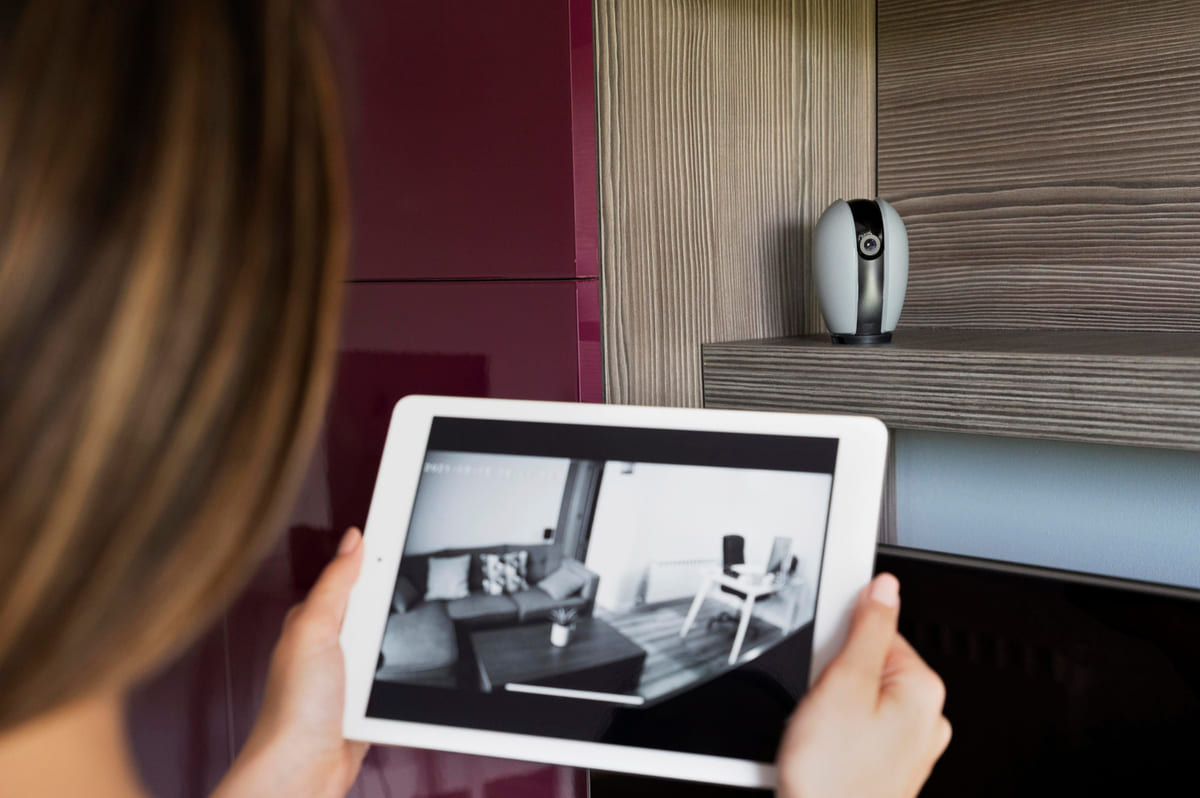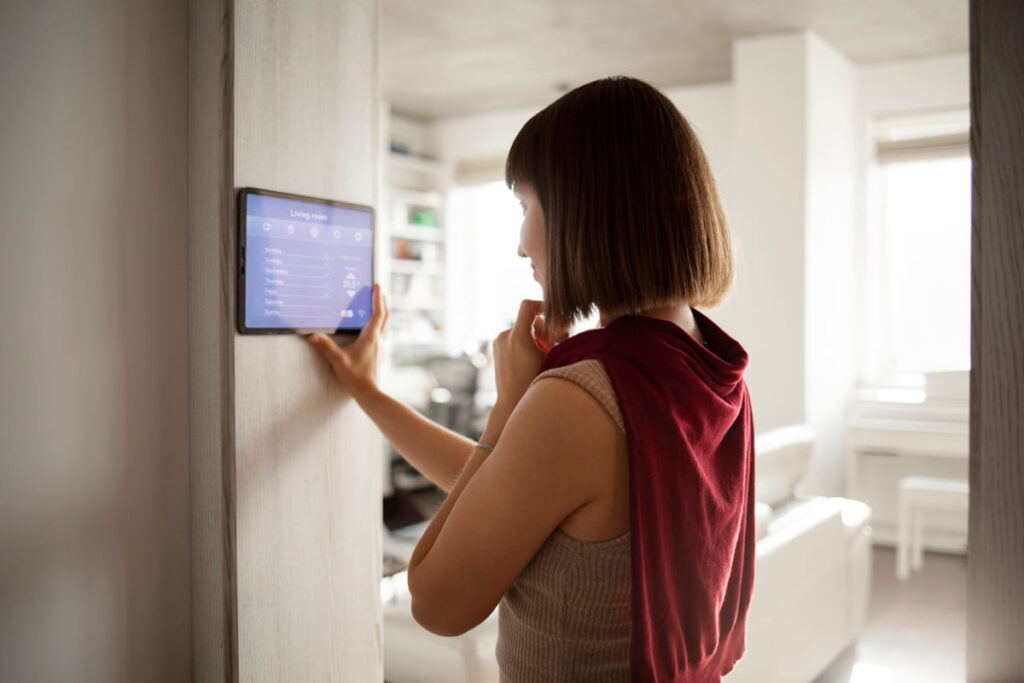Home Security Alarm Systems have become increasingly vital in 2025 for protecting homes and families. Modern systems go far beyond a loud siren – they incorporate smart sensors, cameras, and instant alerts to deter intruders and respond immediately. Adoption is rising worldwide: over half of households now use some form of security device, underscoring the importance of picking the right system. Whether professionally installed or DIY, today’s alarm systems offer unprecedented convenience and peace of mind through the latest technology.
With rising concerns about home break-ins, any delay in response can have serious consequences. An alarm that only sounds a local siren might not get help there in time – neighbors often ignore alarms, and police usually require confirmation of a break-in before responding. This means intruders could have free reign to steal or vandalize until someone intervenes. Additionally, as homes get “smarter,” poorly secured alarm systems become vulnerable to hacking or signal jamming. If a thief exploits these weaknesses, it could disable the alarm or cause it to malfunction right when it’s needed. These problems illustrate why having a modern, well-monitored security system is so important.
Table of Contents
Top 7 Home Security Alarm Systems for 2025
The following seven systems represent the best in home security for 2025, including both professional installations and DIY smart home solutions. Each system’s overview covers key features, ideal use case, and an example of how it can protect a home.
1. ADT Security System
Key Features
-
Professional Monitoring & Setup: 24/7 monitored security with a nationwide response network and expert installation. Backup battery and cellular connectivity keep the system working even if power or internet goes out.
-
Smart Home Integration: Compatible with Google Nest cameras, smart locks, lights, and more. You can control everything via the ADT app or with voice commands through Alexa/Google Assistant.
Best Use Case
ADT is best for homeowners who want a hands-off, professionally managed security solution for comprehensive home coverage and don’t mind a higher monthly cost for that service.
Practical Example
If a sensor triggers while a family is on vacation, ADT’s monitoring center quickly verifies the alarm (using the cameras) and dispatches police within moments. The homeowners also get an instant alert on their phone, so even from far away, they know authorities are responding.

2. Vivint Smart Home Security
Key Features
-
Advanced Automation: High-end security with a sleek touchscreen hub that ties in smart locks, thermostats, and lights. AI-powered Vivint cameras can recognize people and deter lurkers with sound/light alerts.
-
Professional Install & Monitoring: In-home consultation and professional installation are included. 24/7 monitoring over a cellular connection ensures alerts get out quickly.
Best Use Case
Vivint suits homeowners who want a premium security system tightly integrated with smart home features, and who are willing to sign a long-term contract for professional installation, monitoring, and advanced automation.
Practical Example
If Vivint’s outdoor camera spots someone lurking by the house, it automatically sounds a warning and notifies the Vivint monitoring team. At the same time, exterior lights turn on and the homeowner gets an alert. Often this scares the person off, but if a break-in occurs, police are already being called.
3. Verisure Smart Alarms
Key Features
-
Fast Professional Response: A top choice in Europe, with 24/7 monitoring and roughly 45-second response times. The alarm center can quickly contact police when an alarm is confirmed.
-
Custom System & Deterrents: Tailored to each home with professional installation. Includes unique defenses like the ZeroVision fog barrier (fills a room with fog to blind intruders), plus standard door/window sensors, motion cameras, and sirens.
Best Use Case
Verisure is great for those who want maximum security with ultra-fast response and live in a region it serves. It’s ideal if you have high-value property or prefer professionals to handle all aspects of home security, from installation to emergency action.
Practical Example
If an intruder smashes a window in a Verisure-protected home, the alarm triggers and within seconds the Verisure center reacts. They alert police and activate the ZeroVision fog device, filling the area with dense fog. The intruder, disoriented by the blaring siren and fog, flees empty-handed as help is already on the way.
Suggested article to read: 5 Types of Wireless Alarm Button in Construction Site; 2024 Review

4. SimpliSafe Home Security System
Key Features
-
Easy DIY Setup: Wireless sensors (for doors, windows, motion, etc.) with peel-and-stick installation – no tools or contracts required.
-
Flexible Monitoring: Self-monitor via the mobile app for free or opt for 24/7 professional monitoring month-to-month (with cellular backup). You can cancel or resume monitoring anytime.
Best Use Case
SimpliSafe is ideal for renters or budget-conscious homeowners who want reliable security without contracts. It’s perfect if you prefer a simple setup you can do yourself and the flexibility to turn professional monitoring on or off as needed.
Practical Example
A SimpliSafe user normally self-monitors but activates professional monitoring during a long vacation. While they’re away, a door sensor triggers an alarm, and SimpliSafe’s center immediately calls local police while the siren sounds. The quick action and loud alarm scare off the intruder, preventing theft even though nobody was home.
5. Ring Alarm Security Kit
Key Features
-
Camera Integration: DIY alarm system that seamlessly works with Ring cameras and doorbells. Through one app, you can arm the system and check camera feeds instantly. Also integrates with Alexa for voice control.
-
Affordable & Expandable: Budget-friendly starter kits and optional low-cost professional monitoring (no contract). Easy to add extra sensors or Ring cameras anytime to broaden your security coverage.
Best Use Case
Ring Alarm is an excellent choice for DIY users, especially if you already use Ring cameras or Alexa devices. It’s great for those wanting no-contract monitoring and a system that’s easy to expand and manage via a smartphone app.
Practical Example
One night a Ring motion sensor detects movement in the kitchen. The siren sounds and the homeowner gets a phone alert. They open the Ring app and see the indoor camera feed – it’s just the cat. They remotely reset the alarm. If it had been an intruder, the loud siren plus immediate camera access (and Ring’s monitoring service, if subscribed) would help scare off the burglar and alert police quickly.
6. Abode DIY Security System
Key Features
-
Security + Smart Hub: A DIY security system that also works as a smart home hub (supports Zigbee, Z-Wave, HomeKit, Alexa, Google). Security sensors can trigger home automation actions like turning on lights.
-
No-Contract Monitoring: Offers free self-monitoring with instant alerts, plus optional on-demand professional monitoring. You can switch between self and pro monitoring any time without long-term commitments.
Best Use Case
Abode is perfect for DIY enthusiasts who want a security system that doubles as a smart home hub. If you plan to integrate lots of third-party devices or use HomeKit, and want the freedom to switch between self-monitoring and pro monitoring, Abode is a top pick.
Practical Example
An Abode system is armed before the condo owner leaves. Later, they get an alert that the front door opened unexpectedly. The owner checks Abode’s camera feed and sees it’s a family member arriving early, then disarms the alarm remotely. If it were a break-in, the system could have turned on smart lights, and the owner could trigger a siren and call police via the app.

7. Arlo Home Security System
Key Features
-
Camera-Focused: Designed to complement Arlo security cameras. The kit includes a keypad hub (with built-in siren) and multipurpose sensors that can detect motion, doors opening, tilt, or water leaks – all configurable in one device.
-
Wireless & Optional Pro Monitoring: Completely wire-free installation managed through the Arlo app. Works seamlessly with Arlo cameras for unified alerts and video. You can self-monitor for free, or subscribe to professional monitoring with cloud video storage.
Best Use Case
Arlo is best for people who prioritize video surveillance and want a self-installed system to complement their security cameras. It’s especially useful if you already own Arlo cameras or want an alarm you can mostly self-monitor, with the option of professional backup when needed.
Practical Example
An Arlo sensor on the back door detects it opening while you’re out. The alarm siren blares and your Arlo camera records footage of an intruder. You get an instant phone alert, view the live video, and trigger the siren and an emergency call through the app. With Arlo’s professional monitoring, an agent also verifies the incident and calls the police.
FAQs
How do Home Security Alarm Systems contact authorities during a break-in?
In a professionally monitored system, when an alarm is tripped it sends an alert to a monitoring center, which verifies the emergency and then calls local police or fire services. In a self-monitored setup, the system sends an instant alert to your phone and it’s up to you to call authorities.
What features should I look for when choosing Home Security Alarm Systems?
Look for a system with a range of sensors (door/window, motion, etc.), a loud siren, and a reliable alert method (like cellular backup if Wi-Fi goes down). Easy smartphone control is important, and compatibility with smart home devices such as cameras or smart locks can add convenience. If you want professional monitoring, compare the monthly fees and whether you can get it contract-free or need a long-term agreement.
Which Home Security Alarm Systems are best for DIY installation?
Top DIY-friendly systems include SimpliSafe, Ring Alarm, Abode, and Arlo. These kits use wireless sensors and an app-guided setup, so you can install them without special tools. They’re also easy to expand over time and offer optional professional monitoring if you want that extra service.
Is it true that Home Security Alarm Systems can be hacked or jammed easily?
No – reputable Home Security Alarm Systems use encryption and other safeguards, so they are not easily hacked or disabled. While any wireless device could theoretically be tampered with, modern alarms have features to detect jamming or interference, and they use backup communication (such as a cellular network) if the main connection is disrupted. By using strong passwords on your system’s app and keeping the firmware updated, you further reduce any hacking risk. In practice, thieves are much more likely to be scared off by an alarm than to defeat it with high-tech tricks.
Conclusion
Home Security Alarm Systems in 2025 offer more capabilities and choices than ever before. From established providers like ADT and Verisure to innovative DIY solutions like SimpliSafe and Abode, there’s a system to fit every need and budget. By choosing the right alarm system with features suited to your home, issues like break-ins, slow response, and even digital tampering can be effectively addressed.
In summary, professionally installed systems provide hands-off setup and rapid expert response, ideal if you want maximum peace of mind and don’t mind higher costs. DIY systems let you customize and install protection yourself with lower costs and no contracts, which suits renters and tech-savvy users. Many top systems also double as smart home hubs – your alarm can trigger lights, cameras, or locks automatically during an event. Importantly, the best systems of 2025 include backup measures like battery and cellular support to stay functional if power or internet fails.
The Top 7 Home Security Alarm Systems highlighted above combine time-tested burglary deterrents with modern intelligence and connectivity. By evaluating your needs and choosing one of these top systems, you can protect your home in 2025 with the latest technology and peace of mind.
Resources:
- CNET. (2025). Best Home Security Systems for 2025 – Top Smart Hubs to Protect Your Home.
- Deep Sentinel. (2025). Home Burglary Statistics: 11 Stats Every Homeowner Should Know in 2025.
- SafeHome. (2025). 2025 Home Security Market Report.
- SafeWise. (2025). Best Home Alarm Systems in the UK in 2025.
- Security.org. (2025). The Best Home Security Systems of 2025.
For all the pictures: Freepik
Suggested article for reading:
4 Key Applications of Fire Detection Sensors Across the Construction Industry
Top 5 Types of Fire Detection Sensors for 2025: Enhancing Safety with Smart Technology
6 Smart Ways to Integrate Biophilic Design into Sustainable Homes
7 Iconic Modern Architecture Projects That Redefined Urban Landscape
8 Reasons Why Concrete Sensors Are Essential for Modern Construction





